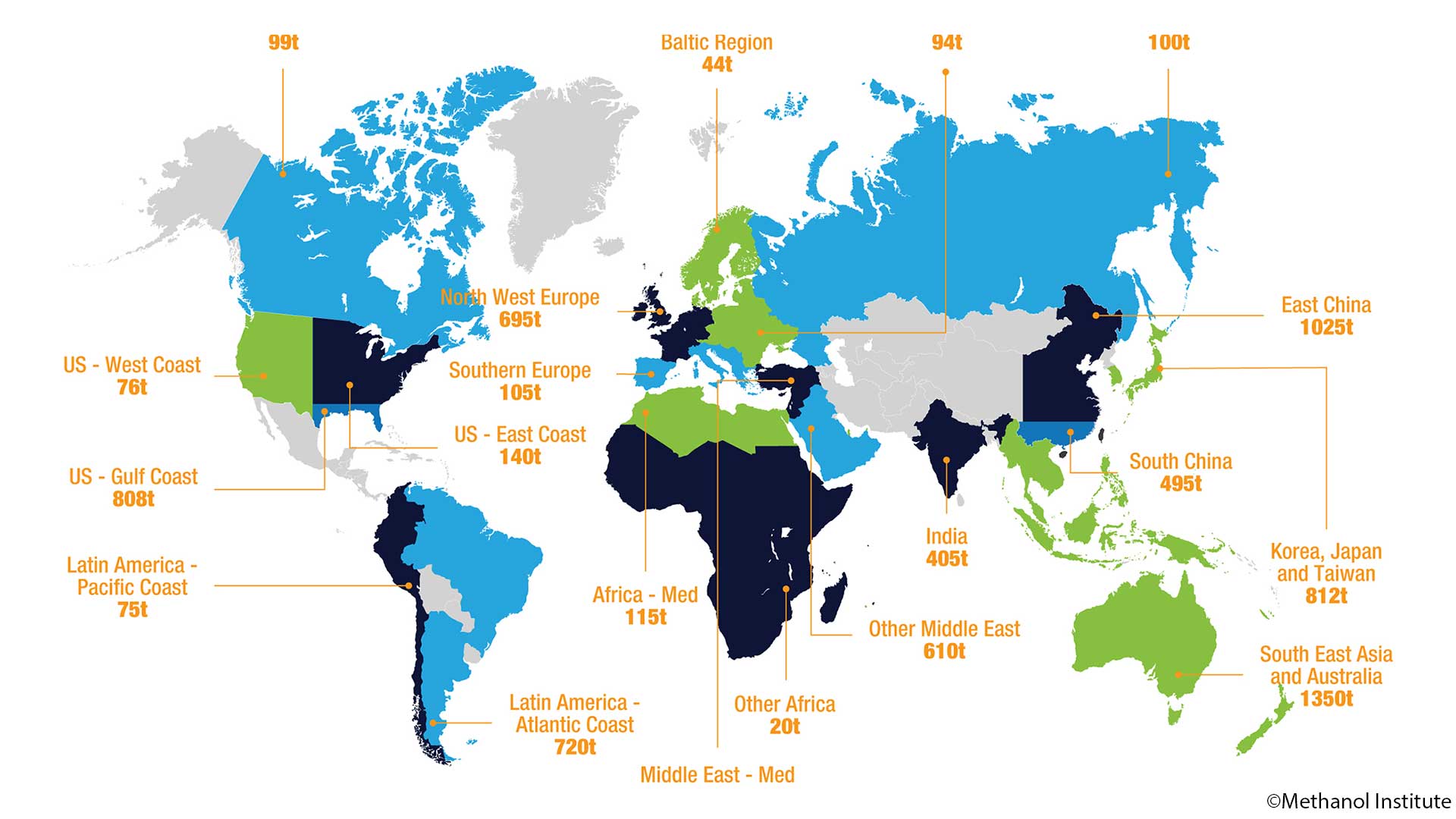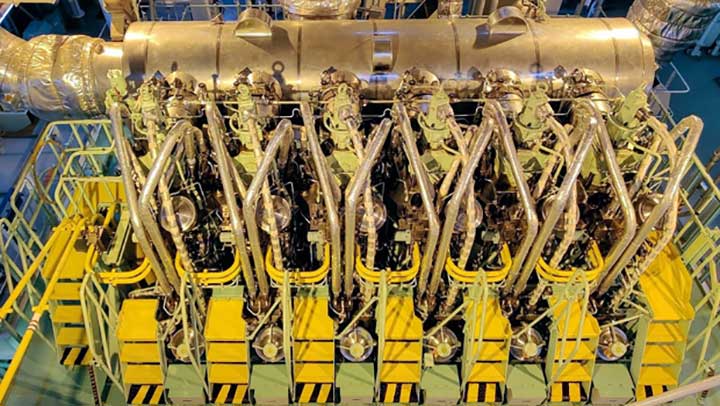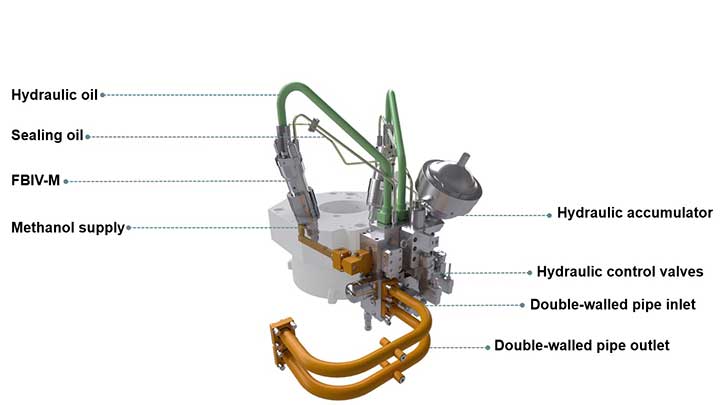What makes methanol so attractive for the maritime energy transition? Our two-stroke expert Kjeld Aabo explains.
With Maersk’s order of the world’s first container vessel fueled by carbon-neutral methanol, the fuel’s use is likely to gain momentum as maritime shipping transitions to become a greener industry. But what are its real advantages? MAN Energy Solutions’ fuel and two-stroke expert Kjeld Aabo tells us why methanol is so attractive.
By Nils Lindstrand

The future of sustainable shipping? Since the 1980s, Kjeld Aabo has been advancing innovative ship engine designs for alternative fuels that can reduce emissions in the industry.
With nearly 40 years in the field, Kjeld Aabo is an expert in new fuel technologies. As Director of New Technology Two-Stroke Promotion at MAN Energy Solutions and Chairman of the Heavy Fuel Working Group at the International Council on Combustion Engines
(CIMAC), Aabo is deeply involved in the advancement of maritime engines and fuel, including a whole palette of fuel solutions needed to bring a greener future to shipping.
“One we strongly believe in,” says Aabo, “is the dual-fuel methanol two-stroke engine, which has already been performing well at sea for more than four years.”
The advantages of methanol
Methanol has several advantages as a carbon-neutral fuel. It can be produced using only renewable resources, such as sun, wind and biomass, along with carbon captured from power plants or taken directly from the air. And by adding water to the combustion
process, Aabo points out (a real eureka moment for researchers at MAN Energy Solutions), methanol is able to meet the stringent emission limits of nitrogen oxide (NOX) Tier III regulation.
Moreover, with minor retrofits, methanol can be used with existing infrastructure. And compared to more conventional fuels, would drastically reduce carbon emissions anywhere from 65 to 95 percent, depending on how its produced.

Because methanol storage is not more complicated than other
liquid fuels, methanol hubs are already widely available.
Although the majority of methanol used today is still produced conventionally from natural gas, Aabo sees great potential for it to become a carbon-neutral resource for the maritime energy transition. “The infrastructure and engine technology are
already in place; the task now is to develop its production from green hydrogen and carbon capturing.” While the production costs will initially be higher than other alternative fuels, such as synthetic natural gas (SNG), its handling costs
will be lower.
Methanol can be handled and transported under normal temperatures and pressure, and it’s been a used for decades as a base chemical in many industries – which means that its storage, handling and properties are all known and documented. In
fact, the only issues holding back its use, for example, as a fuel in cars, are toxicity and corrosiveness.
World’s first carbon-neutral cargo ship
“Toxicity and corrosion aren’t problems with ship engines,” says Aabo. “Yes, the logistics must be in place and staff need training, but because methanol has been traded and transported for years as a chemical, there are well-established
solutions in place for operations like barge-to-ship bunkering and designing engines that won’t corrode.”
Because of the International Maritime Organizations (IMO) decarbonization goals, the shipping industry has shown a keen interest in methanol. Most recently, Maersk, the largest container shipping line and vessel operator, signed a shipbuilding contract for the world’s first container ship fueled by carbon-neutral methanol. The vessel will be ready by 2023; MAN Energy Solutions will be providing the engine.
“We’ve been looking at dual-fuel two-stroke engines based on the diesel cycle since the 1980s,” says Kjeld Aabo. “I promoted our first dual-fuel engine, the ME-GI, at an international conference in 1989, and MAN Energy Solutions sold the first dual fuel ship engine in 2012. Time and the need for sustainability has been on our side in the development of methanol technology.”

Today, the first methanol two-stroke engine on board a ship has been at sea for more than four years and is operating well.
Time and the need for sustainability has been on our side in the development of methanol technology.

MAN Energy Solutions’ ME-LGIM dual-fuel engine allow operators to gradually mix green methanol with conventionally produced methanol.
A gradual maritime energy transition: dual-fuels and retrofits
Even with stronger commitments to address climate change, the market ultimately decides which fuels and engines are in demand. Currently, the market for two-stroke engines seems to favor methanol and ammonia. Taxation, fees and governmental instruments may also soon play a role as new IMO regulations come into effect and talks about carbon pricing become prevalent.
MAN Energy Solutions’ ME-LGIM dual-fuel engine allow operators to mix green methanol with more readily available methanol produced from residual industry gases or from natural gas. This means that vessel owners can gradually transition as prices for renewable methanol come down and an infrastructure and supply are ready for use, making it safer from companies to invest in methanol engines without the risk of later suffering a fuel shortage.
“It’s important for industry and transport companies to show that they’re becoming greener and more environmentally friendly,” says Aabo. “With methanol engines, you can start to blend in green methanol with blue or black methanol (i.e., from industrial or natural gas) and increase the green part as you go.” He also points out that using methanol of any origin means improvements in the engine’s environmental performance: particulate matter in the exhaust can be reduced by as much as 90 percent compared to conventional fossil powered engines.
The engine is based on the same principle as MAN’s diesel engines, explains Aabo. “In fact, the main parts of the engine and its processes come from a normal diesel engine. To make it run on methanol you only need a few add-ons in the fuel feed.” Retrofitting has the potential to become an important market in the near future, adds Aabo, “especially if economics and politics continue to favor methanol – and it isn’t that complicated or expensive, another big advantage of the technology we’re using.”

ME-LGIM engine components: The fuel booster injection valve for methanol (FBIV-M) is specifically designed for safety to avoid hydraulic oil mixing with methanol.
Investing in clean-fuel technology
Today, as Aabo already mentioned, the first methanol two-stroke engine on board a ship has been at sea for more than four years and is operating well. “The natural start is always to use a new fuel on board a tanker transporting the same fuel, ”
says Aabo. “The materials, staff and routines are already adjusted to deal with this type of chemical. By placing an order for a container vessel, Maersk is leading shipping into a more green and sustainable industry.”
Aabo keeps coming back to how important it is that the shipping industry as customers are the ones pushing the development of new technology. “Today, shipping companies are in contact with experts and producers in new and green fuels and then come to us technology providers to learn whether it’s possible to build efficient engines that can run on these fuels. We’re thinking green already, but we need the continued confidence and pressure from the industry to invest in new technology.”
About the author
Nils Lindstrand is a business and technology writer based in Stockholm, Sweden. His work has been published in a number of Swedish and international magazines.
Explore more topics
MAN Energy Solutions is now Everllence.
We have adopted a new brand name and moved to a new domain: www.everllence.com. This page will also be relocated there shortly. We are working on shifting all pages to www.everllence.com.
